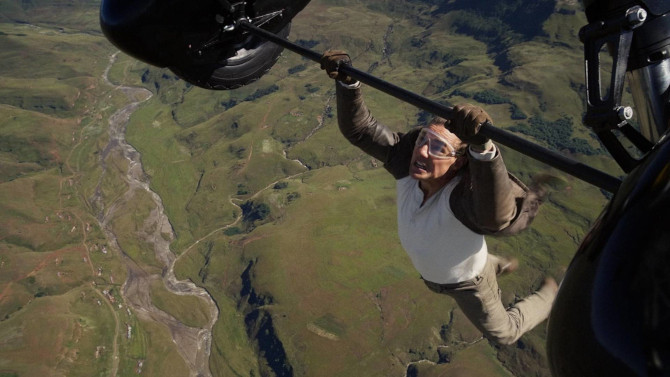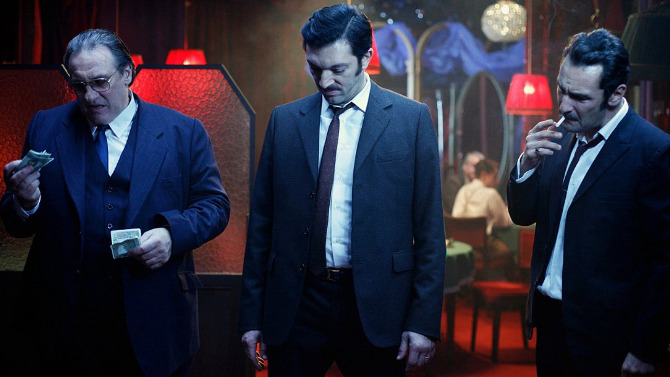
An Impossible Mission
How do you wrap up a franchise like Mission: Impossible? That is, if this even is the final installment... as they’ve made it sound (while at the same time, stars not named ‘Tom Cruise’ pipe up and suggest that might not be so). It has been twenty-nine years, with different writers and visionary directors – from twisty Brian De Palma and the action hair stylings of John Woo, to the lens flares of J.J. Abrams and animation expert Brad Bird, it was only about ten years ago that the franchise decided to opt for The Usual Suspects scribe Christopher McQuarrie for the final four. To return to that opening question once more, you could end with a Sopranos’ style cliffhanger, simply make another entertaining movie like the many before – like Everybody Loves Raymond did it with its final episode, or try to tie everything up in a neat little bow by bringing everything together as the Daniel Craig era did with James Bond. Well, it is definitely more along the lines of the latter example, with some distinct differences.
-
Star Pick with Christian de la Cortina
 Show Me the WayCarlito's WayDecember 6, 2016
Show Me the WayCarlito's WayDecember 6, 2016Following the special screening of the Canadian independent film Generation Wolf at the historic Port Theatre in Cornwall, Ontario, I sat down with filmmaker Christian de la Cortina – who co-wrote, produced, directed and starred in the entertaining crime flick. Cortina, who works out of Quebec, has had a fruitful start to his career, dabbling in many French language television series and miniseries, including La Marraine, 19-2, Mon Ex à Moi and O’, as well as procuring roles in American productions being filmed in La Belle Province, including last year’s highly touted Academy Award nominee Brooklyn. 2008 was a watershed year for the man, as he released his first feature film – Transit, which he also produced, directed, wrote and starred in. Seeing it as an opportunity to concoct intriguing roles for himself and others (as he did not want to be placed in a position where he may only receive similar roles throughout his career – in other words, typecast), Generation Wolf can be seen as a successful extension of that plan – as it depicts an engaging story that is chock full of richly drawn characters.
-
Mais Oui, Crime Spree!
 Mesrine Part 1: Killer InstinctMesrine Part 2: Public Enemy #1December 4, 2016
Mesrine Part 1: Killer InstinctMesrine Part 2: Public Enemy #1December 4, 2016A two part feature, Jean-François Richet’s action crime films Mesrine Part 1: Killer Instinct and Mesrine Part 2: Enemy #1 are best watched when paired together. That is why I am utilizing my dual review feature to discuss both here today. Together, running a little over four hours, the story looks at the life of real life figure Jacques Mesrine (Vincent Cassel) – brought to vivid life by the talented French actor, who is able to capture the man’s charm and Robin Hood (thief) appeal, as well as the scary side that bubbles just below the surface. From its very onset, we are drawn into the suspense-filled tale, as Richet utilizes a split screen effect (and sometimes more) to ratchet up the ominous foreboding. Resembling something from a Brian De Palma flick, it is an effective way to have us looking over our shoulder for some unknown threat. By the end of the sequence, we know the fate of our elusive figure and are transported back to learn the entire sordid tale. Part 1 spans the years 1959-1972.
-

Confessions of a Fatal Femme
DecoyNovember 30, 2016Taking the rare angle of having the femme fatale be the voice-over narrator, the 1946 film noir Decoy, directed by Jack Bernhard, does a lot with the little budget it had. Perhaps the most brutal dame of them all, Margot Shelby (Jean Gillie) is shot at the very beginning of the story, wounded by a then unknown assailant. It is at this point that she recounts her sordid tale. Honey to a rough and tumble aging gangster, Frankie Olins (Robert Armstrong), the man has been placed behind bars following a robbery – which left a guard dead and the thief four hundred thousand dollars richer (which he hid before he got caught). Soon to be sent to the gas chamber, he still has hope that his girl, along with a gangster associate, Jim Vincent (Edward Norris), will find a way to help him escape his doomed fate. Vincent, already short tens of thousands in aiding his fellow hoodlum, is not eager to throw more dough his way.
-

Welcome to the Jungle
The Asphalt JungleNovember 28, 2016Perhaps one of the best descriptive titles to ever come out of Hollywood is The Asphalt Jungle (even though it is the title of the book the film is based on). Directed by John Huston, the 1950 title vividly exemplifies film noir: a dark, gritty, dog-eat-dog world – its only difference from the animalistic wilderness is the stark stone and cement infrastructure that frames the vice-filled world. Oh, and are there vices! Each character has his or her own cross to bear – dragging them down into a world of sin and sorrow. As Doctor Erwin Riedenschneider (Sam Jaffe), the mastermind of the heist, puts it: "One way or another, we all work for our vice". Youthful gals, wealth and extravagance, liquor, gambling on the horses, and an infatuation for a specific man are just some of the misdeeds you’ll find in this movie. The above mentioned Doctor, recently released from prison, has devised an intricate heist – the take, at least one million dollars. Reaching out to a name he heard bandied about on the inside, he visits a bookie by the name of Cobby (Marc Lawrence). Needing the proper backing, a meeting is set between the man with the plan and a prominent, albeit shady lawyer, Alonzo Emmerich (Louis Calhern).
-
Star Pick with Tyler Murree
 Catch a Rising StarThe Shawshank RedemptionNovember 25, 2016
Catch a Rising StarThe Shawshank RedemptionNovember 25, 2016Cornwall’s second most famous actor, Tyler Murree, is proud to hold that title, following behind some guy by the name of Ryan Gosling. Recently, he spoke of his childhood dream that one day he would be able to watch one of his films on the big screen at the historic Port Theatre in his hometown of Cornwall, Ontario. An actor of the stage and small screen, Murree has had a solid career in the two realms. The man has graced the stage as part of both large Toronto productions and glorious Broadway ensembles. He took on roles in Les Misérables; The Lord of the Rings: The Musical; Dirty Dancing; The Lion King, and other such productions. Placing him in front of hundreds of thousands of people across North America, the performer has created unique characters in the truest form of acting. Similarly, Murree has dabbled in the world of television. He has had parts on quality BBC productions in Orphan Black and Copper, while also popping in on Canadian productions such as Murdoch Mysteries and Kim’s Convenience, as well as taking on roles in several Nickelodeon series, including Make It Pop and The Other Kingdom, to name but two.
-

What a Great Kid!
The KidNovember 20, 2016There is perhaps no better synopsis of Charlie Chaplin’s first full length feature film, 1921's The Kid, than that provided by the filmmaker himself. As the motion picture begins, we read the Title Card: "A picture with a smile - and perhaps, a tear". Already an international superstar at the time, Chaplin decided to give his iconic character of The Tramp a full length feature. Taking five and a half months to shoot the film, it once again reiterates just how much of a perfectionist the man was (as movies during this time were nearly never granted this sort of shooting schedule). Similarly, like the rest of his projects, Chaplin writes, directs, produces, acts in and composes the music for this one. The loveable vagabond that is The Tramp (Chaplin) this time finds himself with a baby in hand. A Woman (Edna Purviance), having had a child out of wedlock and with nowhere to turn, leaves her newborn in a wealthy family’s car – hoping that they will adopt it. In a piece of unfortunate happenstance, the car is stolen by a pair of criminals. Dumping the baby at the first possible chance, The Tramp then stumbles upon it in a filthy alleyway.



